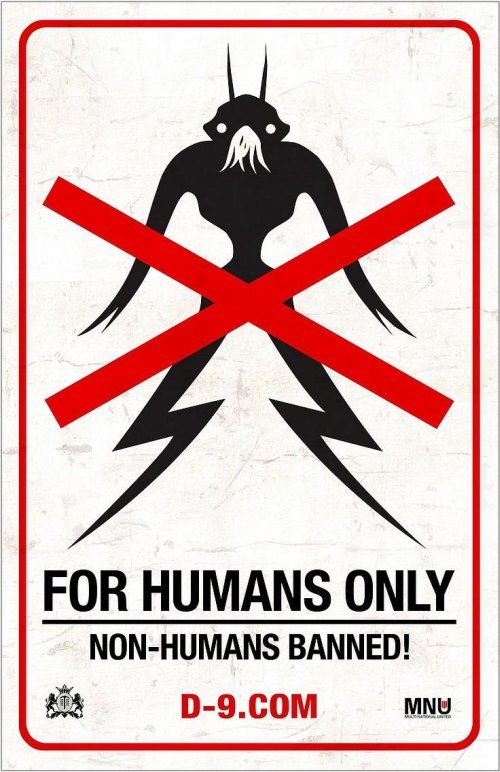Why Steemit needs Robocop
I'm writing this post inspired by the great article about a game-theoretical analysis of steem by @biophil - if you only have a few minutes to read today, I totally recommend reading his three-part series instead of my story!
If you are still interested in it, you actually don't need to read biophils whole article for it, I'm just looking at a very small part of it.
Beauty contests are not only costly for newspapers
The main example biophil used, was the one of a beauty contest. In this example a newspaper pays 10$ to their readers if they vote for the most beautiful girl of the hundred girls that applied for the contest.
The problem is, if the newspaper would just pay out 10$ flat to everyone who submits a vote, it would be very likely that the first picture will be the one winning, since people want to make easy money.
Looking at all the hundred pictures needs effort, these are the costs for picking the most beautiful girl - and costs are something every economical thinking person likes to avoid.
So how could a newspaper incentivize people to actually invest the costs of looking at hundred beautiful girls?
I mean actually one cannot see it as cost to get paid to look at beautiful girls - but well, that is the example
The answer is actually quite easy - just pay the 10 bucks to those people who picked the winning girl - this would by the way be a great example for prediction markets using Schelling Coins. Now people either have a 1 in hundred chance of picking the winner by chance, or they need to do as wished by the newspaper and invest in looking at the hundred pictures of the participants and thinking who could be the winner.
Yet their best chance of winning is not by picking their personal favorite, but the girl they think will be the winner. So what does that mean for the outcome?
Beauty and maths
Beauty contests have been around for quite a while. And even if some trends like style, haircuts and so on change, there seems to be a hidden formula for beautiness.

I don't want to go into details here, but the concept of the golden cut also applies to faces. So girls with a face that apply to these rules have a high chance of winning the beauty contest.
The era of generous newspapers
For this one contest it might now be OK to just go through hundred pictures, but what if there are tons of newspapers with the same idea - paying you to vote for the winner in a beauty contest? At some point people will start to maximize their earnings and start to decrease the costs they have in looking at all the pictures of girls - it also gets boring after a while.
They will develop software that checks the faces of the girls for the golden cut - automatically picking the winner. This has another advantage - as soon as all the participants run the same software, all will pick only ONE winner. In this scenario the outcome is actually not too bad - we will always have the mathematical proven most beautiful girl as a winner and also improved the process of making the choice drastically.
Do bots make Steemit more beautiful?
If we apply this example to Steemit now, we can think of bots that analyze and value texts according to size, author, pictures, special words and so on and automatically upvote them if they are regarded as good contenct. This is a clear advantage to regular voting, since as a user I can save my costs of looking at texts trying to find the most beautiful ones. But is automated up-voting good or bad for Steemit?
In my opinion to make a choice, we have to distuingish two scenarios:
Scenario 1: Only a small part of the community is using bots to upvote content
In this scenario we have some texts that fall into the ratio that they are automatically considered as high-quality. These will get some more upvotes by default - which will result in other authors adapting their texts to confirm with the bots requirements.
In that case we will have a kind of self-developing style guideline, but if someone is really creative and does stuff differently, the long tail of usual users is still big enough to upvote that more than bot-voted posts.
Also these bots will then distuingish the crap from the OK content, but the users still decide which is a beauty-contest winner post.
Yet, long-term I expect scenario 2 to be more likely:
Scenario 2: Bots are used by every serious Steemer (that's how I call the people participating in this community) to upvote content
In that case we will have a really strange scenario. The bots dictate which content is good, so authors are incentivized to make posts that get upvoted by all the bots. This will rather be a post that doesn't have good content, but one that triggers most functions in the bot to upvote it, so it could be total gibberish for a normal user.
This would ultimately lead to the destruction of the network.
Conclusion - why we need Robocop

Probably we won't get to a complete scenario 2, since people also enjoy to go through the posts and upvote them, or have ethical problems with bots since they know an abusive use of them would be a harm for network - nevertheless the system is designed in a way that after some time, there will be so many bots used by whales that it harms the system.
Just because they vote more effectively than an average user and therefore gain more steem power, so they get more influential. This brings inequality to the network and will force normal users to use bots as well, else their vote won't count anything anymore.
So in my opinion, to have a platform that works as supposed, we should have people deciding about content. And with the current reward model, the only solution is to ban bots- which is why steemit needs a robocop!
This is fun to think about. If I ever have time, I'm going to write exactly the bot you described - it will run some sort of machine learning algorithm to learn what features of an article lead to success. My guess is that the correlation between payouts and authorship is extremely strong - @dantheman and @roelandp posts are clearly near the top of the list.
That would be an example of a "selfish" bot - it would be voting with the sole purpose of maximizing its curation rewards. And you're right - if too many whales run this type of bot, it becomes circular. Each bot would be upvoting because the bots are upvoting, and we could lose the real correlation between quality and payout. This is something like your Scenario 2.
On the other hand, I could write a bot that doesn't learn what features make an article high-paying; rather, it gauges each submission by some more objective standard. For instance, I could write a bot that checks 1) spelling and grammar, 2) plagiarism, 3) presence of images, and maybe some other things. This bot would act as a first check on post quality; it wouldn't be perfect, but it also wouldn't have any risk of creating the feedback loop that my first bot makes. This bot wouldn't garner as high curation rewards as the first bot, but it would probably be quite good for the Steemit ecosystem.
Make sure to add me in git if you open a repo - I'm FelixA on github.
Interestingly, nearly at the same time I wrote my article there was another one that offers a bug bounty for the second bot you described https://steemit.com/steem/@cryptoctopus/usd500-bounty-we-need-this-now
Actually I am pretty sure that a selfish bot would be used very fast by very many people. I actually expect that some bots like this are already being used. I also have to admit I would use it, since in a smaller scale it is not selfish, only if it becomes viral. IMHO this is a prisoners dilemma in Steem.
This makes me quite afraight of bots.
Interesting. That does look like a prisoner's dilemma. I wonder how we could quantify the system's resistance to bot-overrun? Could a whale make a robocop bot to flag content that's had too much bot activity?
I wish I had more time to devote to this stuff. I'll look into Xeroc's piston.steem thing; that would be a pretty fun project.